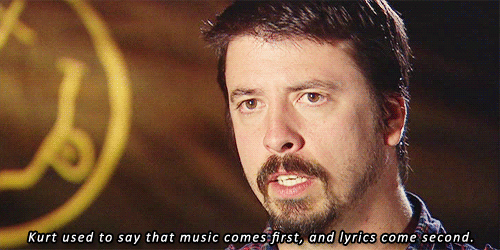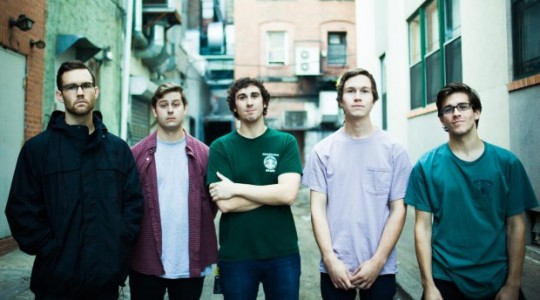- 9 years ago
-

Is there a such thing as a stupid question?
According to our second grade teachers and parents, no. However, in the world of music journalism, the response not as positive. According to some outlets, yes, there definitely are stupid questions. Especially when it comes to interviews.
About six months ago, Nosiey ran a piece about what to ask and what not to ask during an interview with a band. The article amounted to a list of taboo questions that the author, Dan Ozzi, determined to be “shitty.” The list was drawn up based on the the premise that if a question could “be asked of literally any band ever…[then] it is a bad question. Do not ask it.” Questions like “What does your band name mean?” and “What are your influences?” were the first to be stricken from use. Both those questions are fairly popular, so it makes sense that Ozzi would want them taken out of circulation. However, this unforgiving stance on the content of interviews fails to address several things.
Firstly, how old a band is. Not how long have they been a band or whether they’re tweenie-boopers, but rather how long have they been in the public eye. Are they a known band? How long have they been sitting down for interviews and fielding questions? If the band has only ever done an interview with their hometown newsletter, it’s safe to ask about the origin of their name and how the band members met. If the band is The Foo Fighters, those kinds of questions are best left off.
Ozzi has a point in wanting to pull questions that deal with such basic knowledge, but rather than telling writers to simply never pose those questions perhaps sounder advice would be to suggested a quick Google search. It sounds obvious, but research is an integral part of interview prep and knowing what questions have/have not been asked can save an interviewer the embarrassment of appearing uninformed or clueless. This can be done by determining what about a band is common knowledge. What does everyone already know? What information is already out in the ether and the internet? If the answer to a question can be found on the first page of Google, the band’s Wikipedia page, in every recent interview and/or on a shirt in Urban Outfitters, it doesn’t really merit being asked again. If a question is only answered in the band’s Tumblr Ask section, ask it.

Another factor Ozzi’s article neglected to address is timing. A band may have already been asked “How was the recording process for your album?” in an interview, but they also may have just spent time in the studio, breaking old habits and completely changing their process. In thiat sort of situation, the question is fair game. However, it might suit the interviewer to refurbish said question a bit. Instead of asking “How was recording this album?”, ask “How was working with X producer this time around?” Again, this means knowing the band, understanding their scope, their audience and their history.
Research should help to establish the context of an interview. Each interview should contribute to the conversation being had about the band. Questions can start new threads and explore untouched areas, but context is important. No one wants to be the 50th person posing a question, but there is a reason dozen of interviewers are drawn to the same questions and it isn’t simply a lack of imagination or gall. There is a difference between a great, original question and a total outlier. Admittedly, there is great potential for an outlier to become that one totally random question from left field that everyone enjoyed, but no one saw coming. However, this is also the danger that said outlier is so out of context that it ruins the interview. Recently Krishnan Guru-Murthy, of Channel 4 News, interviewed Robert Downey Jr. During their talk, Guru-Murthy surprised the actor with questions about his personal life. Downey, who was promoting Avengers: Age of Ultron at the time, asked, “Are we promoting a movie?” then shortly thereafter walked out. As much as Guru-Murthy had a valid question, it wasn’t the time to ask it. Their meeting was during a lighthearted press tour, not 60 Minutes.
Every industry, every person has these same sort of soft spots. These topics aren’t out of bounds; they’re just not always appropriate. For example, maybe not every single interviewer should ask Dave Grohl about Kurt Cobain. Perhaps now following the release of Montage of Heck that question in particular is once again relevant, but relevance fades. The issue again goes back to context. The atmosphere of the industry, the tone of the interview and the conversation being had around it all inform the questions being asked.

It also helps to know the publication, it’s tone and it’s audience. If a band has interviewed somewhere before, a series of follow-up questions may serve an interviewer better than even the most unique question. If a band hasn’t been covered before, maybe there’s room for some basic facts.
What is and isn’t common knowledge about a band shifts over time. A band that your parents know everything about may be effectively unknown to a modern audience. The distance between when a question was first asked and when it was posed again may be several months, a long hiatus or an entire decade. The span of this time period can enrich or change the answer to question. Obviously, this doesn’t work for questions like “How did you get its name?” but it may alter other answers. Overall, Ozzi is correct in asking for a better quality, better caliber interview. However, his assertion that there are questions that “musicians are tired of answering… [and] readers are tired of reading them” simply isn’t true. They may be tired, but there may be the time to use them. That time may be a band’s first interview or their 20 year retrospective. Interviewers should take Ozzi’s points as guidelines, as a premise to giving a better interview, not as reason to strike “How do you write your songs?” from the record forever.
-Zoe Marquedant
Latest News
- 9 years ago
-
Bushwick Open Studios wrapped up a while back and this year featured a lot of wild installations, fantastical sculptures, and a return to painting. While I was there, I stopped in Pablo Garcia Lopez’s studio where I saw his work that mixed all of the three. A couple of weeks later, I went back to sit down with him and talk about his practice and transformation into an artist.
Garcia Lopez did not begin working professionally as an artist until recently – his background is actually in neuroscience. He holds a PhD and still teaches classes. One of his published papers on Santiago Ramon y Cajal, known to many in the field as the father of modern neuroscience, plays heavily into his artistic practice. Cajal moved away from the accepted comparison of the mind to machines, and rather pursued the idea of comparing the mind to nature, specifically plants. Cajal said, “The cerebral cortex is similar to a garden filled with innumerable trees, the pyramidal cells, that can multiply their branches thanks to an intelligent cultivation, sending their roots deeper and producing more exquisite flowers and fruits every day.” Writing in the 19th century, his words come into play much later in the silk sculptural installations by Garcia Lopez.

After learning of his background and interest in this matter, I was immensely curious as to how exactly it manifests in the artist’s religiously charged works. He explained that his use of silk relates to the individual fibers of the brain, and Cajal’s imagery of fibers branching out and making a whole. Silk also appears fragile but is quite durable when used correctly – and he told me of a “secret liquid” to mold the silk to silicon casts of religious icons. Once they dry the silicon can be removed to reveal a silk sculpture that can stand on its own without crumbling. It’s especially impressive in his wall-to-wall installation appearing like a burst of smoke and fire.
Those Catholic figures immersed in his cloud-like shapes reference his Spanish background. He saw the divide the Catholic Church created, and the chaos that ensued in Spain. It has a painful but importance place in his pieces. Furthermore, he grew up with a religious father and a scientific mother, thereby underscoring the intersection of science and faith in his work. Yet he adheres strongly to the occult, meaning a belief in that which we cannot see, but can feel.
Garcia Lopez’s works are tactile and dramatic, yet not overbearing given their subject matter. He also touches on art’s search for spirituality amidst dogmatic modernist principles. By attempting to make a statement outside of rigid rules and the dense, intimidating history of art (without ignoring it), his work is relatable and deep. Garcia Lopez perpetuates this generation’s attraction to visual objects that instill an emotional response, while also imbuing his works with our desire to explore ourselves, our shared histories, and forces outside our realm of understanding.
- 9 years ago
-
Holy mandels, New York Fashion Week: Men’s edition premieres this week with designers like Thom Browne and Public School and Rag&Bone, Hickey Freeman presenting looks for Spring 2016! As you keep from sweating, waiting in anticipation for Women’s fashion week to kick off September 10, check out some of the fresh, masculine looks hitting the runways this week!
What’s interesting about this week’s Men’s Fashion Week in New York, which kicked off on July 13, and closes July 16 with a showcase by John Varvatos is that the biannual event might just get the attention that’s it’s been so eager to receive for a very long time, on account of the uptick in menswear sales.
Business of Fashion reports that, in the UK, “men have become so fashion-conscious that they are now outspending women on items like shoes.” As Euromonitor International reports: “By 2019, menswear is expected to contribute close to US$40 billion in sales to the global apparel market.”
So here are three things you need to know about Men’s Fashion Week:
- 9 years ago
-
As we arrive at the conclusion of another school year, Art for Progress arts ed programs are developing and evolving in new ways. The music program at Humanities Prep has been flourishing, and we recently held a student and faculty talent show, showcasing the wealth of talent that has been incubating within the school. Performances spanned a wide range of instrumentation and repertoire, and even included some original pieces and songs written by the performers. AFP’s Young Adult Enrichment Program has now spawned three bands, which are now gigging around NYC. Statik Vosion, the core project of the program, also recently played alongside my own band, Bad Faces at the AFP live music series “We Deliver” at The Bowery Electric on Manhattan’s storied Lower East Side. Other projects are in the works for the summer, including a recording project to produce an EP release for Statik Vision and a music enrichment program in partnership with the Upper West Side JCC which will provide music instruction for under-served elementary school students. I taught the classes last year and if was a blast!
At Humanities Prep, in Chelsea, I have been teaching music to high school students for the past three years. Some of the talent that has been emerging from the program is truly unbelievable. I have seen a number of students who had never played an instrument before become capable, and even inspired players, while others have come to me with some experience and still have now far superseded my, and their own expectations of progress. The vocal talent at Prep is nothing less than staggering. Some of the performances in the talent show would have held their own on any stage, anywhere. Some highlights from the show include: April Tiburcio, accompanied by myself on piano, delivering a heartbreaking rendition of Fleetwood Mac’s “Songbird”, Michael Ohakam singing a gorgeous version of the xx’s “Angels” joined again by myself on acoustic guitar as well as Alligator Records Blues legend and faculty member Michael Hill on electric guitar. Genesis Castillo offered an exuberant original piano composition, while English teacher Dorian Grey Heron sang and played a heartfelt original song “I Can’t Breathe”, calling attention to the recent racial violence currently plaguing our country. April and I also sang The Civil Wars’ “Poison and Wine”, and Idniel Paula accompanied me on guitar for the Beatles’ “Norweigian Wood”. The finale was Gloria Gaynor’s disco classic “I Will Survive”, with a student and faculty band including bass prodigy Modibo Kearny, science teacher Rajni Tibrewala on violin, Genesis Castillo on the piano, and Michael Hill, Dorian Heron and myself on guitars. Earlier in the day, we performed the same song at the school’s end of the year ceremony with Rosie Estevez tearing up the vocals, so we really got to dig into that one and make it the theme of the day.
Each year former Humanities Prep teacher Laura Castro hosts a weekly Coffee House event at the school. Students and faculty are invited to share poetry, music and artwork, creating an open, receptive space for self expression in the school community. At the end of each year, an event is held at the Nuyorican Poets Cafe, one of the points of origin of slam poetry. Students from AFP’s music program have participated every year, and we had a great time at this years show, which was held in May! We performed “I Will Survive” there, as well, with Evan Goldstein singing. We also did a faculty rendition of “Me and Julio” by Simon and Gardunkel, which made an appearance at the school talent show, too.
AFP hosted a special visitor at Humanities Prep this May, who performed for an all school assembly in the auditorium. Jeremy Dannenman, aka Parade Of One, a talented saxophonist and musical activist brought Sophie, a musician from Rwanda to perform for Prep students and Faculty. Sophie is the only professional player in the world of her instrument, the Inanga, a ten stringed hybrid of a harp and a guitar which originates from her country. The performance was especially eye opening in that Sophie only speaks her native Rwandan tongue, and very little English. She and Jeremy were communicating across that language barrier with their instruments, illustrating how music is a language that transcends all others. Thankfully, Sophie spoke enough English to answer a few simple questions from the audience. I’ve included a short video where you can see Sophie showing her instrument to the audience as she plays.
Another highlight of this year’s arts ed programs has been the work I’ve been doing with the kids in the young adult enrichment program. Statik Vision is sounding better and better each week, and have brought some talented friends by who have started their own band with a completely different sound. Both bands played a gig together recently, and in addition to playing the AFP “We Deliver” series, Statik Vision have played alongside my band in Harlem, at The Shrine World Music Venue. The players in Statik Vision have each developed individually while the band dynamilc continues to evolve. Raymond Moreta has gone from a novice to an exceptional drummer with his own special rhythmic flavors. Jason Macfarlane has emerged not only as a solid and thoughtful bass player, but also a talented singer and songwriter. Alex Romero brings the blues and classic guitar chops to the band, and songs that he delivers in a brooding baritone reminiscent of Jim Morrison of the Doors. Gabriel Ogbennaya’s guitar provides the chimey icing on the cake with sweet arpeggios and lines that float over the churning rhythm section. The addition of singer Celeste Pasian has added another dimension to the band entirely, with her huge voice delivering soaring melodies and a whimsical showmanship, not to mention a female element to the band. The band is currently preparing for recording dates we are setting up in July and August to record and mix an EP album of all original Bronx rock. I can’t wait to get into the studio!
- 9 years ago
-
Mable by Spraynard
When: July 10th
Spraynard was started in 2008 by high school friends Pat Graham, Mark Dickinson, and Patrick Ware. The group released several splits as well as 2011’s amazing Funtitled, which earned them a strong and rather devote following. However, just as the anticipation seemed to be building to critical mass, the band announced a hiatus in 2012. Fans were left with a compilation album, The Mark, Tom, and Patrick Show, put out by Asian Man records in 2014. The record would ultimately serve as an impetus for Spraynard to eventually reformed, but this time with Jake Guralnik replacing Dickinson on bass. With their new line-up, the band signed to Jade Tree Records where they now plan to release their newest record, Mable. The tracks “Everywhere”, “Applebee’s Bar” and “Bench” can already be heard throughout the internet. From these first listens, it seems that the new record will have all the clever, introspective, punk goodness of the old Spraynard and it will be as if the band never left.
Nina Revisited: A Tribute to Nina Simone by Various Artists
When: July 10th
The recent release of Liz Garbus’s What Happened, Miss Simone?, a biopic on Nina Simone, has sparked a renewed interest in the legendary singer. The film, which was made available via Netflix on June 26th, joins a bumper crop of Simone-centered pictures slated for release this year. 2015 should also see the release of the documentary The Amazing Nina Simone as well as the Cynthia Mort movie, Nina, which stars Zoe Saldana as Simone and follows her rise to fame as well as her relationship with her assistant Clifton Henderson. Nina Revisted is a fitting accompaniment to all these films, especially it’s official partner What Happened. The record fittingly opens with Lisa Simone, Simone’s daughter, singing “My Mama Could Sing” and goes on to explore some of her best known songs in both modern and purist contexts. Musicians such as Lauryn Hill, Jazmine Sullivan, Grace, Usher, Mary J Blige, Gregory Porter, Alice Smith, Common and Lalah Hathaway contributed renditions of songs like “Feeling Good” (Hill), “Love Me or Leave Me” (Grace), “I Put a Spell on You” (Smith) to create an eclectic track listing of Simone’s work.
Camera Shy by Camera Shy
When: July 14th
Nick Bassett and Lexy Morte form Oakland, California’s Camera Shy. Two pieces of two other CA-based bands (Whirr and Nothing) came together in 2014 and released the EP Jack-o-Lantern. The following year they put out another EP, Crystal Clear. The band is now due to release their first full-length Camera Shy off of Run For Cover Records. Their newest effort much like their previous is a mix of California, shoegaze and The Smith’s that will sound perfect in July whether you’re in a sunny space or in desperate need of an escape to one.
Copacetic by Knuckle Puck
When: July 31st
Knuckle Puck is easily one of the most promising acts out of this recent class of pop punk bands. Their evolution is evident in each of their EPs. From their self-released, self-titled debut to the most recent While I Stay Secluded, the band has shown with each album that they can stay consistent in their quality of sound and lyrics while still growing and improving as a band. One element that decided improved is Joe Taylor’s voice. What first sounded like a harsh, but maintainable rasp “No Good” of their The Weight That You Buried EP has rounded out and sounds more controlled in the band’s new single “True Contrite” off of Copacetic. The album’s other single “Disdain” hedges Taylor even closer to Dan Campbell and/or early Adam Lazzara territory. The songs show an ever improving musicianship that is sure to shine through the rest of the album.
??? by Potty Mouth
When: Soon?
It’s no secret that Potty Mouth has been recording. Abby (guitar/vocals), Ally (bass) and Victoria (drums) have been posting diligently to the band’s Facebook/Instagram/Twitter from their studio space (which is possibly in Seattle?) and making it well known that they have something in store. Potty Mouth has yet to give their latest effort a name, shape or date, but whatever it is will be welcome, whether it’s an EP, LP or singular track. It’s been awhile since the band has released anything, their last record being 2013’s Hell Bent, and new music is long overdue. The latest and most promising update came on July 3rd when the Northhampton band announced that they had “finished our thing.” Sounds promising. Now we wait.
-Zoe Marquedant


